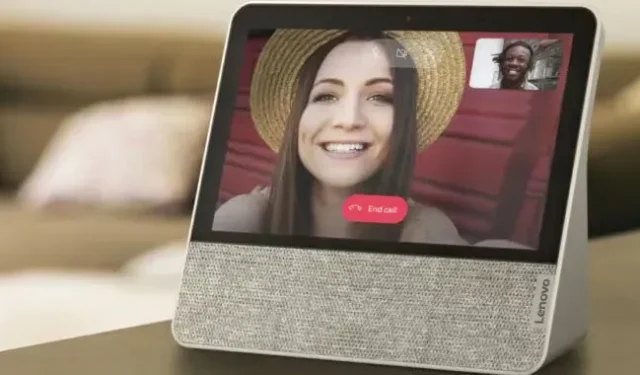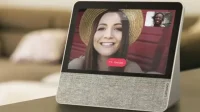Google Assistant continues to suffer due to the closure of Google products. The latest products to die are third-party Google Assistant smart displays. 9to5Google was the first to spot this hidden notice on the Google Duo support page:
Important! Google no longer provides software updates for third-party smart displays: Lenovo Smart Display (7″, 8″ and 10″), JBL Link View and LG Xboom AI ThinQ WK9 Smart Display. This may affect the quality of video calls and meetings.
We’re pretty sure this announcement applies to every third-party Google Smart Display that’s ever launched, so the product line is dead. Google’s first smart displays, the Google Nest Hub and Nest Hub Max, aren’t going anywhere and will now be the only options on the market.
Google Smart Displays display Google Assistant on the screen and support all the same commands as a Google Assistant speaker like Google Home or Nest Audio; just shout “Hey Google”and it will try to recognize your command. The screen adds the ability to see visual accompaniment to search results, usually either text, a photo slideshow, a timer, or media or smart home controls. The system is a touch screen and has a really simple user interface that you can move around the screen without speaking to it.
The smart display plan started in 2017 as Google’s answer to devices like the Amazon Echo Show. At first, Google did not launch its own display, but instead required several third-party manufacturers to build the first devices. The $250 Lenovo Smart Display was released first and received the most press coverage.
Google’s plan with third-party smart displays has always seemed a bit odd because the company developed product guidelines for its partners that it didn’t follow in its own products, and then used that discrepancy to undermine those partners in the marketplace. Third-party smart displays ran Android Things, a new version of Android that was scaled down a bit for IoT devices, and the standard SoC for these devices was the Qualcomm Snapdragon 624 Home Hub.
A year later, when it came time for Google to release its own smart display, the company followed none of the recommendations it made to third parties. Instead of Android Things, it used an updated OS based on the Google Chromecast platform and, since it was not running the heavier Android Things, could use a cheaper chip from Amlogic. The result is a device that is at least $50 cheaper than all third-party options and probably killed any interest in third-party options.
Google’s plan to turn Android Things into a general-purpose IoT OS fell through and the project was shut down in early 2021. Since then, these third-party devices have been lame. The Cast OS on the Google Home Hub has also been deprecated and has been replaced by Fuchsia.
Google Smart Displays still has a sister product line, Google Smart Clocks, two of which were ever made by Lenovo and Google never released its own version. Smartwatches are most likely dead too, they just aren’t mentioned on the Google Duo support page because they don’t work with Google Duo. Like Smart Display, Smart Clock still runs Android Things, only with a more streamlined interface that revolves around morning and night tasks like setting an alarm and checking the weather.
Devices are not blocked immediately, and although they will not receive updates in the future, they will continue to work for an indefinite period of time. Looks like equipment sales are over too. Lenovo has been the most active seller of these devices and all of the company’s smart displays and smartwatches are listed as “out of stock “.


